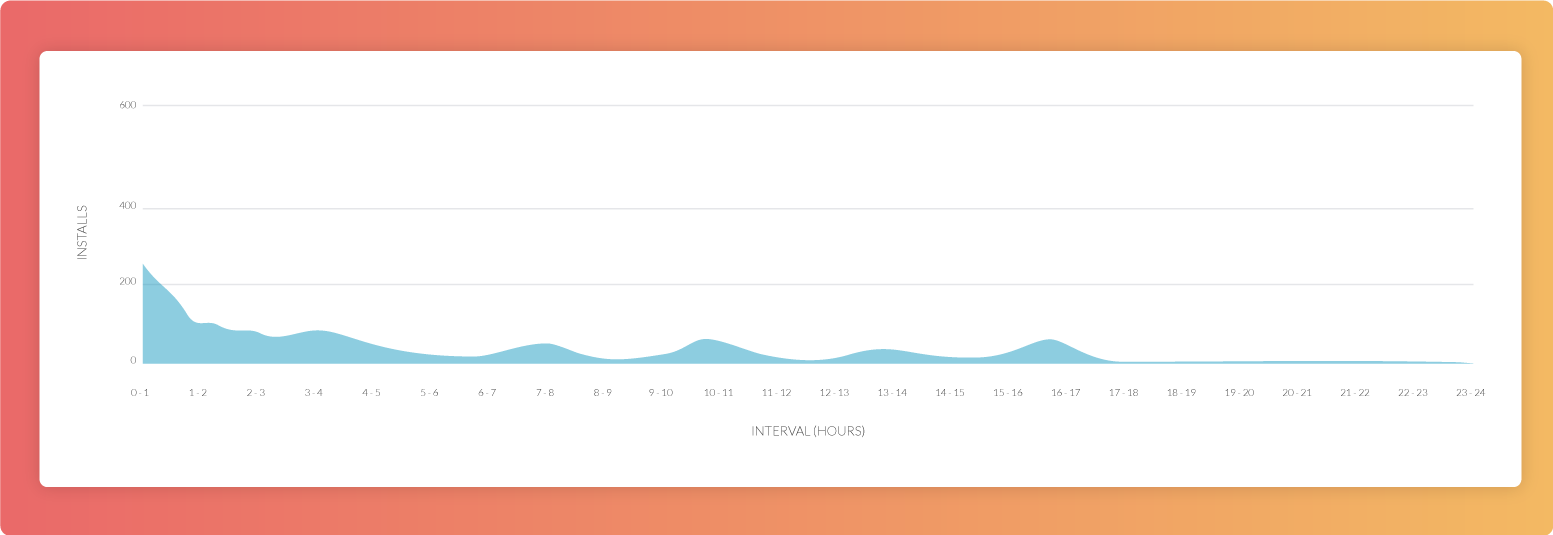Subscribe to our newsletter and get the latest resources sent to your inbox.

Beware of CPA: 5 Tips to Spot Fraud in Mobile Affiliates
9 MIN READOver the past few years, mobile marketing has gone from a nascent practice on the fringes of larger advertising campaigns to a must-have part of a marketing mix. That’s no surprise, given how much time people spend on their devices. But when you combine the mainstreaming of mobile performance marketing with the turbulence in the larger tech industry that’s led to widespread layoffs, you end up with brands that need to do more with less. And while mobile marketing may be a must-have, it’s still a unique industry segment that requires understanding how it differs from the larger digital marketing space. Ultimately, many teams require outside expertise to help them navigate the complexities of the mobile media terrain.
Case in point: affiliates. On the traditional web, affiliate marketing is a process where publishers earn a commission by promoting a product or service made by another retailer or advertiser using an affiliate link. For instance, Instant Pot might place an ad for its latest cookware on a popular parenting blog, and when someone clicks on the link and makes a purchase, the affiliate (a.k.a. publisher) gets a commission from the sale. Brands that don’t want to establish contracts with each affiliate contract with larger networks of publishers who have deals with sub-affiliates. This process works well on the web, though fraud can occur whereby conversions may be misattributed through a practice known as “cookie stuffing.” With cookie stuffing, a publisher can load multiple cookies for a user despite the user never showing interest in a product. When a conversion occurs, the publisher may receive credit for the transaction instead of the appropriate channel.
Mobile affiliate traffic explained
But affiliates work a bit differently in the mobile app space — with very different results. Mobile affiliate networks often pitch themselves as mobile ad networks or DSPs while rebrokering deals many times, making them ripe for fraud. These networks will promise advertisers a guaranteed CPA, collecting payment only when a user takes a desired action — this is, frankly, a marketing manager’s dream. Essentially, the agreement is, “We don’t make money unless you make money.”
But here’s the catch: the sub-affiliates — several times removed from the original network — aren’t always showing the ad. Instead, the impression or click URL runs in the background, and users never see the associated ad. The network loads impressions or clicks that match the user’s device profile (user agent). If the user — who has never seen the ad — happens to install the app organically, then the fraudulent impression or click may receive credit for that user.
Ultimately, this skews marketers’ data, making an underperforming channel look better by taking the credit for an organic install or attribution that should have been given to a legitimate impression. Bad data leads to bad decisions and ad budgets spent on the wrong channels.
Affiliate networks are not made equal; some have clean, trustworthy publishers. But in turbulent economic times, ensuring your marketing budgets are spent as efficiently and effectively as possible is more important than ever. So, our team has put together five things to look for to spot fraud within these networks.
Five ways to spot fraud on mobile ad networks
- Your partner can’t accept impression tags or isn’t using them – Ads served legitimately should be able to render an ad impression, and installs should occur soon after an ad impression (ideally within three hours).
- Very low click-to-conversion rates – If your partner sends lots of clicks with low click-to-install rates (below 0.1%), then it’s very likely those clicks are fraudulent, as there is no correlation between clicks and installs.
- High conversion rate from install to the key post-install event – With a CPA model, advertisers only pay when a specified action is taken. So, if your install-to-event rate aligns with organic, they are probably organic users.
- Most installs don’t take place in the first hour after the ad view or click – With high-quality traffic, most installs come shortly after the impression or click — usually within the first hour. As a result, we see fewer and fewer installs with time. This is normal. If you see a random or mostly flat distribution of installs, there’s a good chance those actions are misattributed.
Typical installs per hour

Abnormal installs per hour

- Fraudulent networks or DSPs can’t run SKAN – Our SKAN testing has found it works well with DSPs. So, if your partner says they can’t run SKAN-friendly campaigns but they claim they are a DSP, it’s likely they aren’t serving the ads themselves. Apple is notified when a real impression happens, so if an ad is rebrokered multiple times over, it’s unlikely your partner will be able to receive postbacks. Additionally, if the ad runs in the background and a real impression never occurs, SKAN would not count it anyway.
Preventing mobile ad fraud before it starts
In the early days of mobile performance, marketing fraud ran rampant. In fact, FeedMob got its start by bringing transparency to the industry. Over the years, MMPs realized that there was a fraud problem and tackled it on their own. However, as mobile marketing gets absorbed into the larger marketing mix — and mobile-specific expertise gets pushed aside — we see the problem of fraud rearing its head again. The good news is, it doesn’t have to be this way.
Talking to your partners is the key to making good decisions with your mobile ad budget. Understand where the ads are being served and demand transparency from them. If they can’t provide it, there is a reason. You can even ask for references. You wouldn’t hire a marketing manager without checking with their past employers, so don’t be afraid to ask your new partners who their clients are and to talk with them directly.
Here at FeedMob, we have vetted hundreds of partners across the mobile marketing spectrum and gradually narrowed them down to the most trusted drivers of high-quality traffic and conversions. We’ve helped countless clients reach their CPA goals and grow with confidence — so if your team needs a little extra guidance, we’re here to help.
Posted: March 21, 2023
Category: Mobile Insights Blog, Mobile Performance Strategies
Tags:

